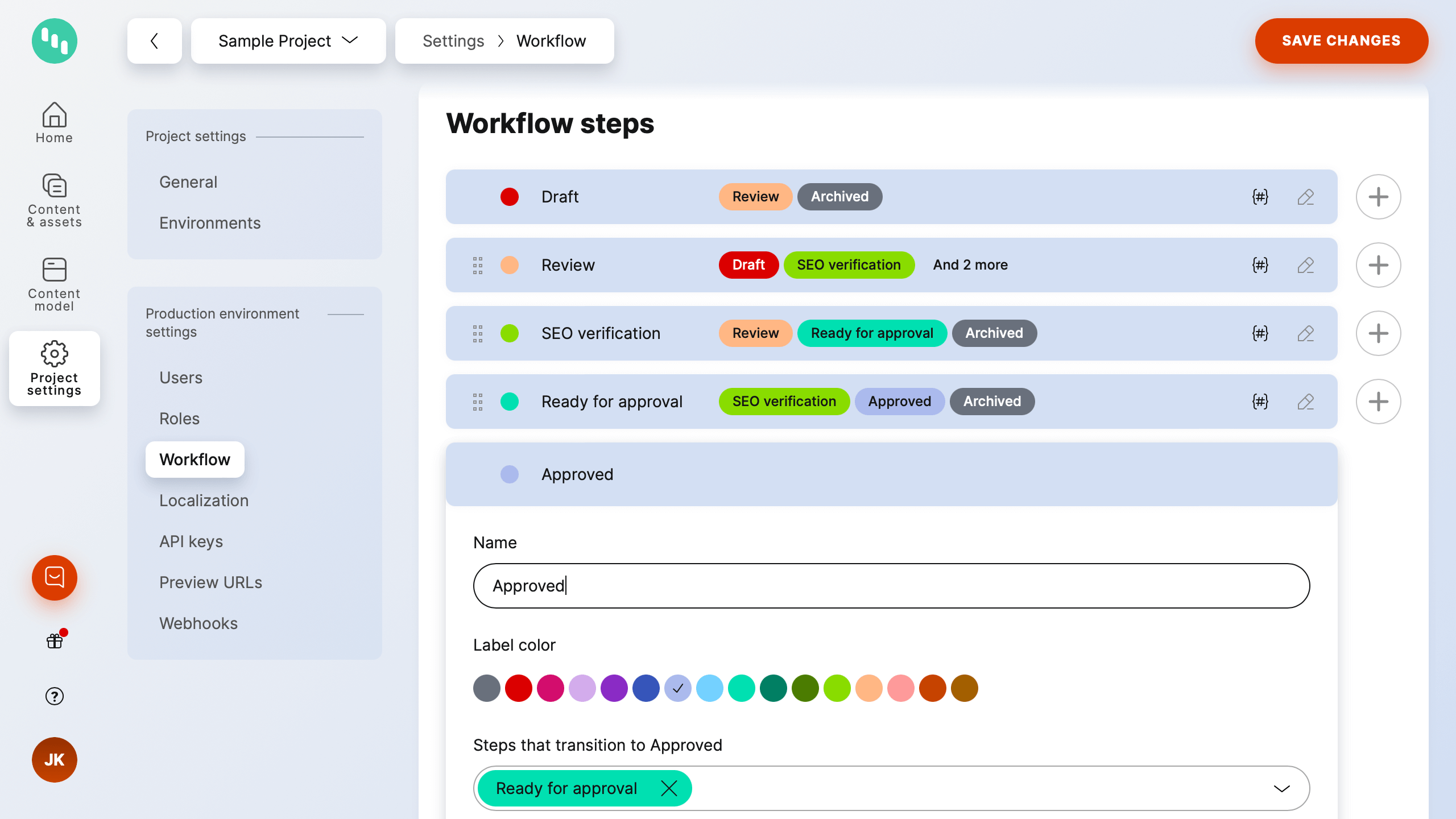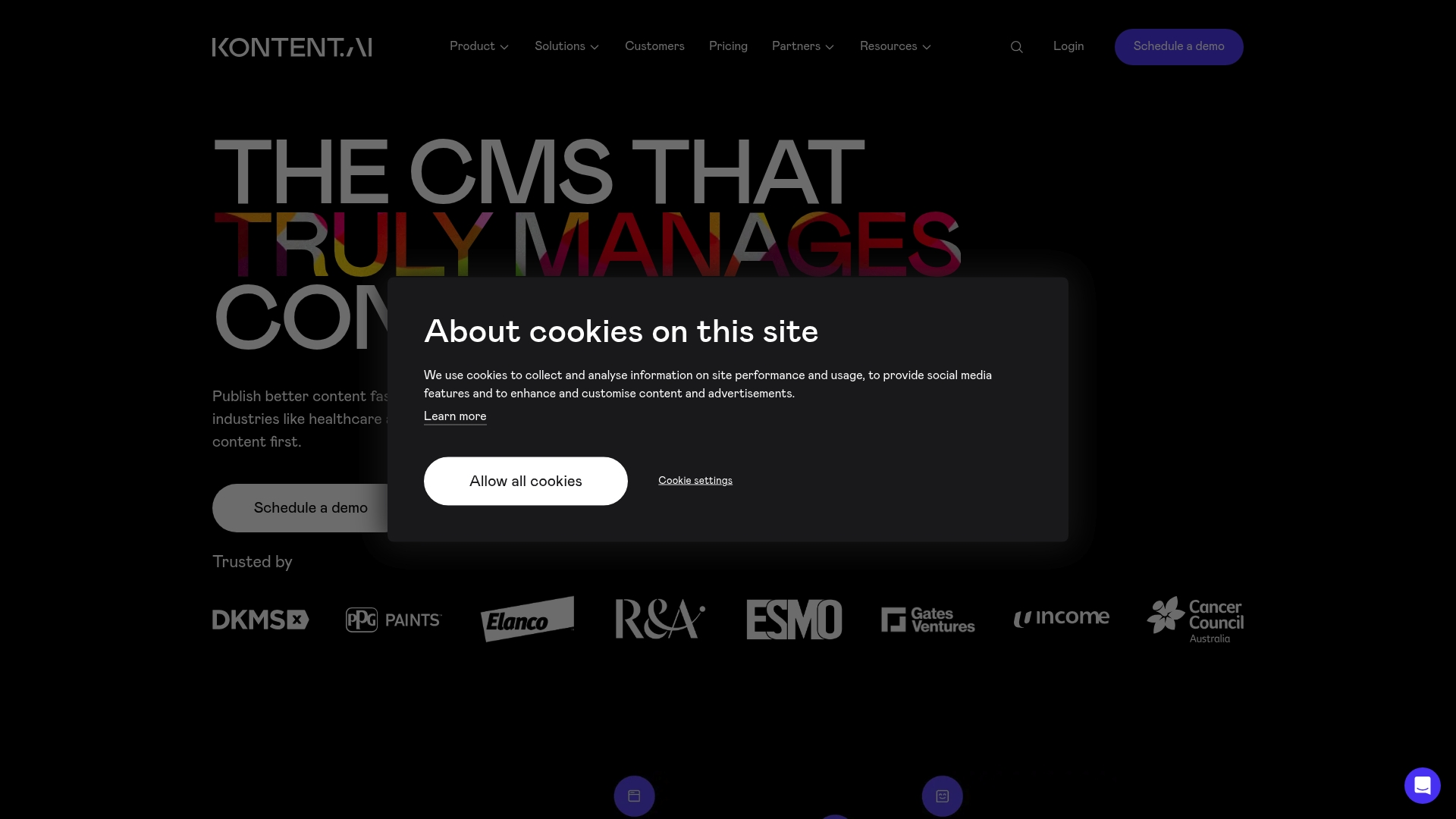

Unclaimed: Are are working at Kontent.ai ?
Kontent.ai Reviews & Product Details
Kontent.ai is a headless CMS software best known for being a modular content platform that lets developers and marketers plan, create, and deliver experiences that look and feel great across various channels. It’s built to seamlessly support the working dynamics of teams, facilitating easy content production, modular content reuse, real-time collaboration, and approvals.

( 1 )
| Capabilities |
|
|---|---|
| Segment |
|
| Deployment | Cloud / SaaS / Web-Based |
| Support | 24/7 (Live rep), Chat, Email/Help Desk, FAQs/Forum, Knowledge Base, Phone Support |
| Training | Documentation |
| Languages | English |






Compare Kontent.ai with other popular tools in the same category.

The ease of use is the biggest advantage.
Sometimes it is hard to get used to some aspects.
We have managed to create a local version of global company website.
We're using Kentico to handle content and more. To preserve data from business logic in the current system that has no other space. In case of change in technical requirements it is very easy to expand / update the existing structure. And teaching end-users (editors) what is to be done there is also very easy.
Some features are still needed to maintain data integrity in business-level projects, where data validation is necessary to automate. It includes unique verification rules, additional field constraints options, etc. What also amazed us is that the measured traffic includes access to property.
You can begin very quickly. Kentico Kontent has a simple user experience and a distinct gui. I obtain fast and useful responses every time I contacted technical support. And the reliability and availability of APIs have never been problematic. The key questions are answered in the documents and many design tools and SDKs are available to ensure a smooth development process.
Really easy integration to all of our services and apps. Delivery API libraries makes the integration really fast.
I miss the option to use SSO (Single Sign On) with the Professional version of the Kentico Kontent. However it is included in the Enterprise package.
Unified access to the same content without the need to duplicate it across multiple solutions. We do not need to set up complicated infrastructure to start using the Kentico Kontent.
Four things: Content creation and collaboration capabilities - easy to set up custom workflows. Content ecosystem hub unifying content silos - training users only on a single system and having content only within a single spot. Multilingual support. On the technical side the well-documented API allowed us to integrate in almost no time.
Nothing, in particular, it does what its meant for.
Increasing engagement and interaction of visitors.
The speed of content entry and the flexibility of content assembly.
Not so much a dislike but we're very much looking forward to some of the features that are on the roadmap. We just want those now!
The two main areas we have utilised Kentico Cloud are: 1. Componentised content-managed websites where content needs to be structured but easily assembled into rich, engaging website pages. 2. Omni-channel digital experiences where structured content needs to be delivered to multiple channels easily
I liked how easy it was to pick up and learn. Everything is laid out well.
grabbing links from the assets to post on the website is a little cumbersome due to the fact you have to extract only a piece of the url link when you click the asset.
Providing a quicker turnaround the the clients for website revisions and articles for the website.
Ease of use in configuration, as well as ease of use for data entry.
Lack of connectors to other CMS solutions.
Headless CMS. Platform for managing content creation.
The whole platform is fast and responsive. Creating the content model is a breeze, it's a pleasure to use. It allows non technical users to get up and running in no time. I contacted support a few times with very specific and semi technical questions and they responded within minutes, the best customer support I have worked with. I also contact support with a feature request and after an approval flow it was implemented and I can now use the enhancement in my project. The documentation and examples are very well written and allow you to work on integrations like webhooks without wasting time on trying to figure out how things work.
It would be nice to have a personalization engine / rules, on the other hand maybe it's good if Kentico Cloud sticks to it's core business, offering a very good headless CMS
Speeding up go to market Delivering a CMS at a much lower cost Offering a user friendly platform to marketers Completing integration with other platforms using webhooks
generic items as childs vor content are extremly useful
the visual design could use some improvement
Marketing content, structured data whicj has to be changed and manualy put in
We like interface, SDKs, multilingual support, an option to use different technologies. Kentico also listens to our feedback on the features and improvements that we need. We are confident that the product will grow and we will deliver our promises to a client.
On some projects, we required more complex role management.
Kentico Cloud centralises all content for our clients and we are free to distribute it to different sources like multilingual sites and apps.





